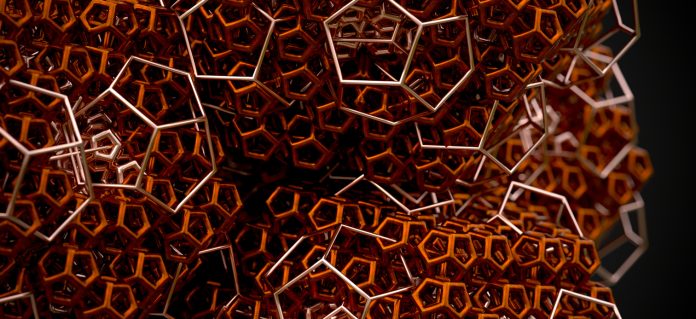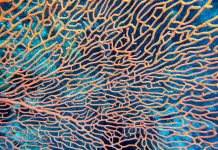The 2025 Nobel Prize in Chemistry has been awarded to Susumu Kitagawa, Richard Robson, and Omar M. Yaghi for their work in developing metal–organic frameworks (MOFs)
These MOFs have created new opportunities to help combat climate change by developing innovative methods to capture carbon dioxide, store clean energy, and harvest water from the air.
This year’s award shows the growing importance of advanced materials in supporting a sustainable future. MOFs are at the forefront of this progress.
What are MOFs?
Metal–organic frameworks are highly porous, sponge-like structures made from metal ions linked with organic molecules.
Despite their solid appearance, they are filled with a complicated network of microscopic cavities. Just a few grams of MOF powder have an internal surface area comparable a football pitch.
This porosity gives MOFs their unique ability to trap and store gases and liquids at a molecular level. They can absorb carbon dioxide directly from the air or from industrial emissions, which makes them a good option in the effort to reduce greenhouse gases.
Climate solutions
Carbon capture and storage (CCS) is a key strategy in slowing global warming, and MOFs may make it more efficient and affordable. Their structure allows them to selectively trap CO₂ while letting other gases pass through, which is especially useful in power plants and factories that produce high volumes of emissions.
MOFs are also central to cutting-edge technologies like Direct Air Capture with Carbon Storage (DACCS), which extracts CO₂ directly from the atmosphere, and Biogenic Emissions Capture with Carbon Storage (BioCCS), which targets emissions from biological sources. Both methods are supported under the European Commission’s Carbon Removals and Carbon Farming (CRCF) regulation, which is creating a certification framework for permanent carbon removals in Europe.
European support for MOF innovation
The European Commission has included MOFs in key research and innovation programmes. Through Horizon Europe and the Innovation Fund, several projects are investigating real-world applications of these materials.
For example, the PORECAPTURE project is exploring how MOFs can be used in advanced membranes for capturing CO₂, while MOST-H2 is focusing on their ability to store hydrogen. These initiatives are part of the efforts to decarbonise industry, promote green technologies, and support Europe’s goal of climate neutrality.
Clean water and energy
Scientists are exploring how MOFs can extract water from dry air, a breakthrough for regions suffering from water scarcity. MOFs can also help purify polluted water and store hydrogen, enabling cleaner transport and energy systems.
As climate change continues to challenge communities worldwide, MOFs offer multiple pathways for adaptation and mitigation. Their versatility makes them one of the most promising materials for supporting the green transition and building climate resilience.











